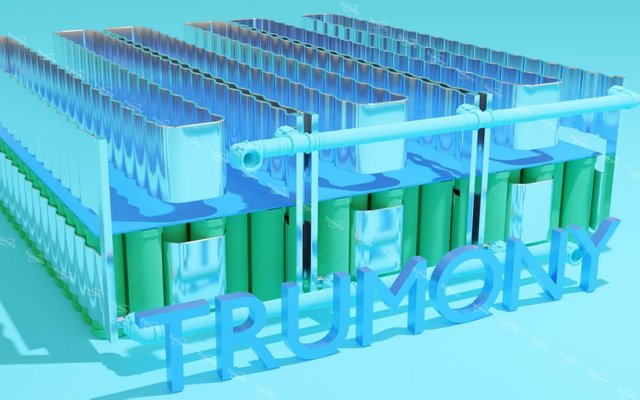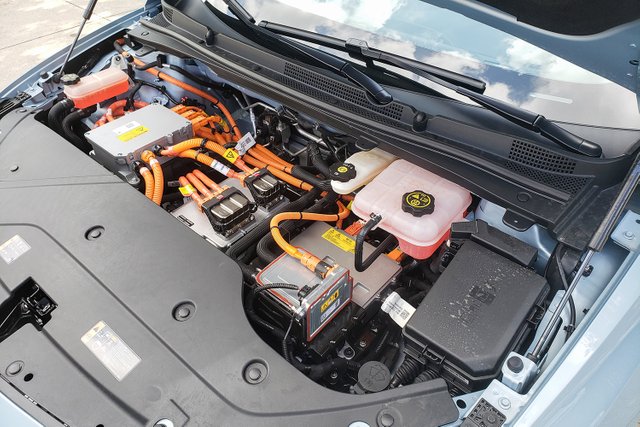Changes in Requirements for Battery Liquid Cooling System

Overview of Thermal Management of New Energy Vehicle Power Batteries
(1) Principles and Specific Methods of Thermal Management of Power Batteries
Thermal management of power batteries involves managing the temperature impact on battery performance. It combines the electrochemical characteristics of batteries with heat generation mechanisms. Based on the optimal temperature range for battery charging and discharging, it aims to address issues arising from excessive heat or low temperatures during battery operation. These issues include heat dissipation or thermal runaway. Maintaining the battery temperature within a specific range is crucial for ensuring normal battery operation. Common thermal management methods for batteries include air cooling, liquid cooling, and phase change material cooling. Among these, liquid cooling stands out due to its high heat transfer coefficient, large heat capacity, and fast cooling speed. It significantly reduces maximum temperatures and improves temperature uniformity within the battery pack. In situations with early signs of thermal runaway, liquid cooling systems can utilize high-flow coolant to dissipate heat from the battery pack and redistribute heat between battery modules, rapidly suppressing further deterioration and reducing the risk of runaway. Additionally, liquid cooling systems have a relatively small volume, making them suitable for mobile applications. Therefore, liquid cooling has become the mainstream technology for thermal management of automotive power batteries, gradually replacing traditional air cooling in energy storage management.
(2) Composition and Classification of Battery Liquid Cooling System
Battery liquid cooling system consist of battery liquid cooling plates, water distribution pipelines, and refrigeration/liquid supply systems (compressors, condensers, evaporators, expansion valves, dryers, etc.). Among these components, the liquid cooling plate is one of the most critical parts of the battery liquid cooling system. Typically located below the battery pack, it transfers heat by contacting the surface of battery cells or cell modules, carrying away excess heat generated during battery operation through internal flow channels, thereby controlling the battery's operating temperature.
Battery liquid cooling plates need to meet core requirements such as high heat dissipation power, good sealing performance, precise heat dissipation design, and lightweight construction. The manufacturing process is complex. Currently, there are various types of liquid cooling plates on the market, including harmonica tube, stamping, extrusion, and blow molding types.
With downstream applications demanding higher product performance and advancements in production technology, stamping liquid cooling plates have replaced harmonica-type liquid cooling plates and captured the majority of the market share.
Trends in Battery Liquid Cooling System Requirements
Benefiting from the rapid development of new energy vehicles, the installation volume of power batteries continues to rise. According to statistics, from 2020 to 2022, the global shipments of power batteries were 158.20 GWh, 371.00 GWh, and 684.20 GWh, respectively, with year-on-year growth rates of 134.51% and 84.42% in 2021 and 2022.
In recent years, China has successively introduced a series of industrial policies such as the "Energy-saving and New Energy Vehicle Technology Roadmap 2.0," "Action Plan for Promoting the Development of Automotive Power Battery Industry," and "Mid- to Long-term Development Plan for the Automotive Industry," guiding the upgrading of the automotive industry and technological advancements, vigorously promoting the development of supporting industries for new energy vehicle power batteries. Public data shows that from 2018 to 2020, China's power battery production remained relatively stable. In 2021 and 2022, it reached 219.69 GWh and 545.88 GWh, respectively, representing year-on-year growth rates of 163.44% and 148.48%. From January to September 2023, China's cumulative production of power and energy storage batteries reached 533.7 GWh, with a cumulative year-on-year growth of 44.9%, with power battery production accounting for approximately 92.1%. China has taken an absolute leading position in the global supply of new energy vehicle power batteries.
Driven by policy guidance and market demand, the power battery industry continues to grow and expand, with market share of industry players steadily increasing. In 2022, the top ten global power battery installation companies were CATL, LG Group, BYD, Panasonic, SK On, Samsung SDI, CALB, Guoxuan High-Tech, XWDA, and Funeng Technology, with six Chinese companies occupying the list. From the perspective of competitive landscape, China's new energy vehicle power battery industry has formed an oligopoly pattern. In 2022, the installation volume shares of CATL, BYD, Contemporary Amperex Technology Co. Ltd., Guoxuan High-Tech, and EVE Energy Co., Ltd. accounted for 48.20%, 23.45%, 6.53%, 4.52%, and 2.44%, respectively, totaling 85.14%.
The rapid growth in production and sales of new energy vehicles and the rapid development of domestic power battery companies directly promote the growth of demand for battery liquid cooling system.
Lightweighting and Technological Innovations in Batteries Drive the Growth of Product Added Value
To improve the range anxiety and increase the driving range of new energy vehicles, power battery production technology is constantly undergoing rapid iterative innovation. In addition to continuous exploration in the field of materials, at the battery integration technology level, trends such as large cells, large modules, module-free design, and integration are evident. This is aimed at increasing lightweighting and the volume utilization of battery packs, and enhancing the volume energy density of battery systems.

Currently, global power battery system integration technologies mainly include traditional module battery pack technology (CTM), module-free design battery pack (CTP), and battery-body integration technology (CTB/CTC). Under the traditional module battery pack technology (CTM), the battery pack mainly consists of a casing (upper cover, outer shell bottom plate, lower guard plate), battery modules, battery control modules, battery external connection terminals, battery management systems, etc. The battery liquid cooling plate is usually laid on the upper cover or lower shell of the battery pack, and thermal conductivity materials are arranged between the cells to transfer heat to the upper and lower ends. The spatial utilization rate of the CTM module configuration is only 40%, which greatly limits the space for other components. The development of battery integration technologies such as CTP, CTB, and CTC has gradually become a key research and application direction in the industry.
In September 2019, CATL launched the world's first mass-produced CTP battery pack, which has now iterated to the third-generation Kirin battery. BYD, Hony Capital Energy, and others have also introduced their respective CTP products around the same period. The Kirin battery integrates functional components, incorporating beams, battery liquid cooling plates, and thermal insulation pads into a "multi-functional elastic interlayer," placed longitudinally between the cells. This significantly increases the heat exchange area, improves heat exchange efficiency, enables the Kirin battery to support 4C charging, and charge to 80% in 10 minutes, while also providing structural support, cooling, thermal insulation for the cells, and expansion buffering. In terms of the application of CTP in vehicles, models such as Tesla Model Y, Model 3, NIO ES6, XPeng G3, XPeng P7, Aiways U6, and many others have maturely adopted CTP batteries, with BYD implementing blade batteries across its entire lineup. As integration increases and other functionalities such as structural support are addressed, the added value of battery liquid cooling plate products correspondingly increases. With the exploration and application of cutting-edge technologies such as CTB/CTC, the integration trend between battery liquid cooling plates and battery packs will further increase performance requirements and more complex system integration requirements. The trend towards integration of battery liquid cooling plates with battery packs will lead to further increases in product added value, creating greater market space for battery liquid cooling plate manufacturers. Manufacturers of battery liquid cooling plates will seize opportunities in the market competition of battery pack integration with their technological and product advantages in the field of thermal management.
Despite the continuous emergence of new battery technology routes, strict requirements for high-level and sustained development capabilities of thermal management systems, especially battery liquid cooling plate products, remain. Power battery and new energy vehicle manufacturers have increasingly stringent requirements for the design and production integration capabilities of battery liquid cooling plate suppliers, product testing and process stability levels, as well as supply chain management and cost control. Suppliers with richer product design and production experience and more stable and timely manufacturing capabilities can establish a foothold and seek further development in the rapidly changing new energy thermal management market.
The rapid growth of electric vehicles and energy storage systems has brought significant changes in requirements for battery liquid cooling systems. These systems now demand higher efficiency, compact designs, and smarter temperature regulation. Enhanced sensors and real-time monitoring technologies are increasingly integrated to ensure optimal performance and safety. Interestingly, hobbyists exploring thermal management techniques often ask, [url=https://technetronelectronics.com/how-to-use-a-photoresistor-with-an-arduino/]How to Use a Photoresistor With an Arduino[/url] to detect light and simulate temperature monitoring. This highlights a growing interest in DIY approaches to understanding cooling technologies. As battery tech evolves, cooling systems must adapt with intelligent, responsive solutions.